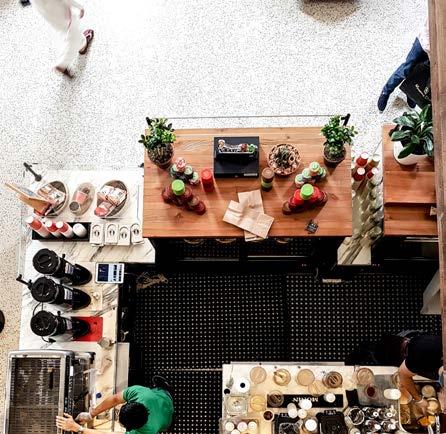
4 minute read
Experiential Retail: Repositioning Saudi Arabia’s Retail Sector
FEATURE
Advertisement
Saudi Arabia’s retail sector is undergoing a range of changes in both the supply and demand side. CBRE highlights the importance of understanding and delivering successful demand drivers, particularly in the food and beverage segment of the market, and their impact on asset performance.
The retail sector in Saudi Arabia has been undergoing material structural shifts over recent years which have underpinned significant changes in both the supply and demand of retail amenities. These shifts have largely stemmed from changes in legislation which have ranged from the reintroduction of cinemas, 100% foreign ownership, to the implementation of Saudisation in the sector. Over this period, we have also seen changes in consumer spending patterns, driven by the reductions in cost-of-living allowances, relatively anemic growth in average real wages, the growth in e-commerce and demographic shifts.
The onset of the pandemic not only accelerated the pace of these changes but also has introduced new complexities in the market. The increase in the rate of VAT from 5% to 15% has further impacted the purchasing power of consumers. This combined with an uncertain economic backdrop, decline in international visitation, increased e-commerce take-up and on-going social mobility restrictions, have materially impacted the retail sector. According to estimates by Euromonitor, the total value of store-based retailing in Saudi Arabia fell year-on-year by 15.9% in 2020, with many retailers consolidating or closing branded stores all together given the tougher trading conditions. However, as mentioned above, the retail sector was already facing headwinds prior to the pandemic, where in the four years to 2019, total storebased retail sales fell by 1.0%. This is despite the increasing levels of recreational spending over this period.
Anthony Spary
DIRECTOR – HEAD OF OFFICE INVESTOR LEASING & RETAIL CBRE


Therefore, arguably, there is a misalignment of demand and the supply of retail amenities, which must be addressed in order for the sector to reach its true potential and contribute effectively to a more diversified economy. Given Saudi Arabia’s young population, where almost 60% of Saudi nationals are below the age of 30, the current delivery model of retail is arguably out of step with young cohort’s requirements. Many assets in the Kingdom lack appropriate demand drivers to generate footfall. This is particularly true for experiential focused retail amenities, a segment which is seeing a global surge. Saudi Arabia is no different, in fact, due to the recent surge in entertainment related concepts, after a prolonged absence, the sector has significantly higher growth potential compared to the global average.
Whilst a substantial number of internationally recognised durable goods and apparel stores have entered the market in Saudi Arabia, the entertainment sector still lacks quality offerings. More so, in this space, Food and Beverage offerings are becoming the primary draw for entertainment venues. Therefore, before more complex experiential retail concepts are rolled out in Saudi Arabia, the low quantum of quality concepts in the entertainment sector of the market must be addressed. We are already seeing developers addressing this with future schemes in the Kingdom with the likes of Saudi Entertainment Ventures looking to capitalise on this gap in the market.
The successful execution of this will be critical in attracting footfall to help sustain other retail architypes. According to the ICSC Industry Insights Report 2019, consumers are increasingly looking to have food, drink and entertainment in one location, with 70% of consumers preferring to visit entertainment venues for groups outings, rather than casual dining destinations. Therefore, alongside the entertainment aspect of retail placemaking, incorporating quality international food and beverage will act as a significant demand driver in the Kingdom, this will promote locations as a social hub and will be the key component of a successful retail mix.
However, landlords must curate a mix of tenants which offer a varied mix of menus and experiences to avoid dilution of sales. Alongside onboarding recognised concepts, there should also be provisions for home grown concepts, which can even startup in such locations before moving up the chain scale in the event they are successful. Detailed studies must be carried out as to what the required quality, quantity and mix of food and beverage will be in each location. Understanding and catering for the asset’s catchment demographic will lead to greater levels of footfall and dwell time. Landlords in turn will be able to bolster occupancy rates and even command premium rents by leveraging these demand drivers to attract a range of auxiliary tenants.













